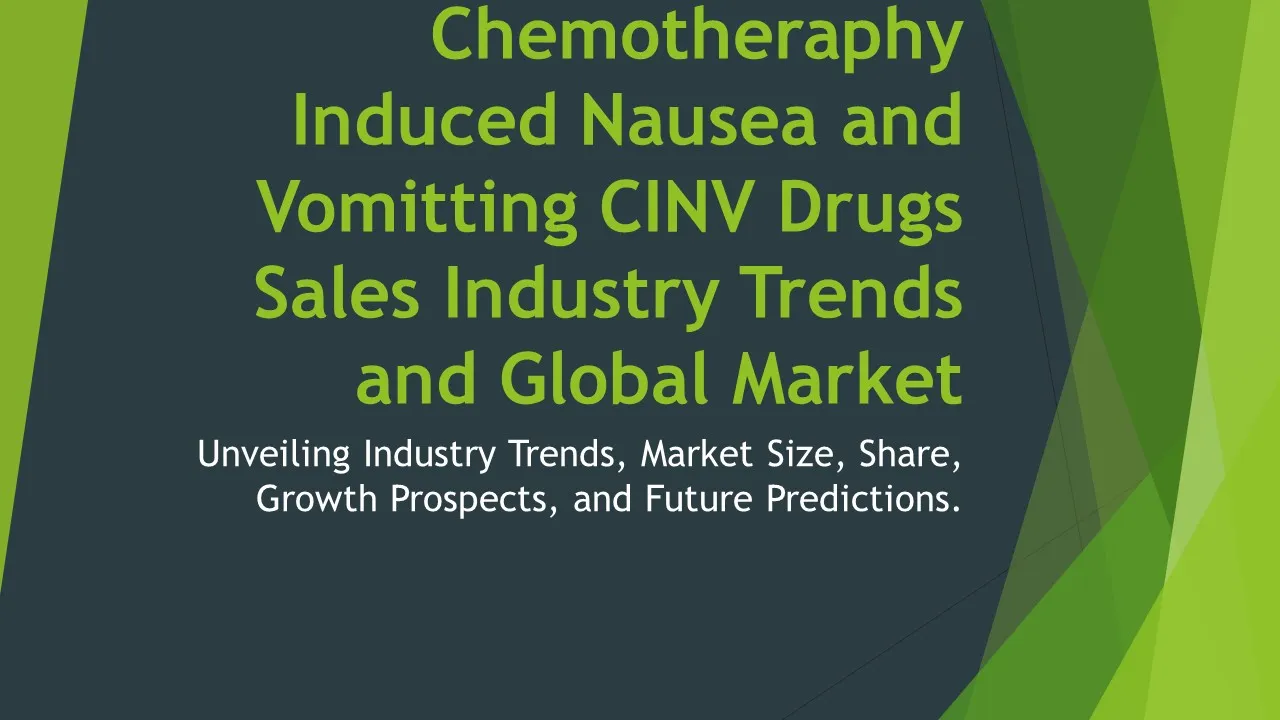Human Papillomavirus Infection Drug Sales
Human Papillomavirus Infection Drug Market Segments - by Drug Type (Antiviral Drugs, Immunomodulators, Cytotoxic Drugs, Interferons), Route of Administration (Oral, Topical, Injectable), Distribution Channel (Hospitals & Clinics, Retail Pharmacies, Online Pharmacies), End User (Hospitals, Specialty Clinics, Homecare), and Region (North America, Europe, Asia Pacific, Latin America, Middle East & Africa) - Global Industry Analysis, Growth, Share, Size, Trends, and Forecast 2025-2035
- Report Preview
- Table Of Content
- Segments
- Methodology
Human Papillomavirus Infection Drug Sales Market Outlook
The global market for Human Papillomavirus (HPV) infection drugs is projected to reach approximately USD 5 billion by 2035, growing at a compound annual growth rate (CAGR) of around 6% from 2025 to 2035. The increasing prevalence of HPV-related diseases, including cervical cancer and genital warts, is a major driving factor contributing to this growth. Additionally, rising awareness about HPV vaccination and treatment options, together with government initiatives to promote HPV screening and prevention, are expected to boost market demand significantly. Innovations in drug development, such as novel antiviral therapies and immunomodulators, are also anticipated to create new opportunities in the market. Furthermore, the expansion of healthcare infrastructure in emerging economies especially in the Asia-Pacific region will likely enhance accessibility and availability of HPV therapies, propelling overall market expansion.
Growth Factor of the Market
One of the key growth factors for the Human Papillomavirus infection drug sales market is the increasing incidence of HPV infections globally. As awareness surrounding sexually transmitted infections grows, healthcare providers and patients alike are becoming more proactive in seeking treatment options. Furthermore, the introduction and approval of advanced therapeutic options, including targeted antiviral drugs and novel immunotherapies, have significantly enhanced treatment efficacy, which in turn drives market growth. The growing focus on preventive measures, such as vaccination programs, is also contributing positively to the market landscape, as it leads to a decrease in new HPV infections and subsequently creates a demand for treatment of existing cases. Additionally, favorable reimbursement policies and government funding for HPV-related health initiatives are expected to facilitate faster adoption of effective therapies, further boosting market growth. Lastly, the increasing investment in research and development from pharmaceutical companies is paving the way for innovative solutions that effectively address the clinical needs associated with HPV infections.
Key Highlights of the Market
- Projected market size of USD 5 billion by 2035, with a CAGR of 6%.
- Growing incidence of HPV-related diseases, including cervical cancer.
- Rising awareness about HPV vaccination and treatment options.
- Innovations in drug development for enhanced treatment efficacy.
- Expansion of healthcare infrastructure in emerging economies.
By Drug Type
Antiviral Drugs:
Antiviral drugs represent a significant segment of the HPV infection drug market. These medications are primarily designed to target and inhibit the replication of HPV, thus reducing viral load and promoting recovery in infected individuals. With the increasing understanding of HPV's role in various cancers, there has been a surge in research efforts to develop more effective antiviral therapies. Notably, drugs like Acyclovir and other novel compounds are showing promise in clinical trials, which highlights the potential for growth in this segment. The rising prevalence of HPV-related lesions among the adult population is also driving demand for antiviral treatments, making this segment a vital component of the market landscape.
Immunomodulators:
Immunomodulators are increasingly gaining attention in the treatment of HPV infections, as they work by enhancing the body's immune response against the virus. These drugs aim to boost the immune system's ability to recognize and eliminate HPV-infected cells, thus reducing the incidence of HPV-related complications. The rising incidence of immunosuppression disorders, along with the need for targeted therapies, has led to a growing interest in immunomodulating agents. Additionally, the ongoing research into monoclonal antibodies and cytokine therapies shows substantial potential for this segment's growth, ultimately offering patients more effective treatment options and driving overall market expansion.
Cytotoxic Drugs:
Cytotoxic drugs are essential in the management of HPV-related cancers, particularly in advanced stages where other treatment options may be ineffective. These drugs work by targeting rapidly dividing cancer cells, thereby limiting tumor growth and spread. The increasing incidence of cervical and other HPV-associated malignancies has resulted in a commensurate demand for cytotoxic agents, which is expected to sustain growth within this segment. Innovative chemotherapeutic strategies and combination therapies involving cytotoxic drugs are continually being developed to enhance treatment outcomes, further driving interest in this area of the market.
Interferons:
Interferons play a critical role in the immune response against viral infections, including HPV. Their ability to inhibit viral replication and enhance immune cell activity makes them a valuable therapeutic option for managing HPV infections and their associated conditions. The use of interferon-based therapies has gained momentum in recent years due to their efficacy in treating HPV-related lesions and cancers. Ongoing research into novel interferon formulations and their applications in personalized medicine will further contribute to the growth of this segment, as healthcare practitioners look for more effective solutions to combat HPV-related diseases.
By Route of Administration
Oral:
The oral route of administration is one of the most common methods for delivering HPV infection drugs, primarily due to its convenience and ease of use for patients. Oral antiviral medications have gained popularity owing to their effectiveness and the increasing preference for self-administration, allowing patients to manage their treatment regimens more independently. This segment is expected to witness steady growth, driven by the increasing awareness and diagnosis of HPV infections, as well as the need for easily accessible therapies without the requirement for clinical supervision. As pharmaceutical companies continue to develop new oral formulations, the attractiveness of this delivery method is likely to enhance its position within the HPV drug market.
Topical:
Topical administration is another significant route for HPV infection drugs, especially for treating external manifestations such as genital warts. Topical medications are usually well-tolerated and offer localized treatment with minimal systemic side effects, making them a popular choice among patients. The growing prevalence of HPV-related skin lesions drives demand for effective topical therapies, which include various ointments and gels specifically formulated to combat the virus. Innovations in topical formulations, such as combination therapies and enhanced absorption techniques, are expected to further strengthen this segment's growth potential.
Injectable:
Injectable medications represent a more advanced route of administration, particularly for patients requiring more aggressive treatment for HPV-related diseases. This delivery method is often employed for immunomodulatory drugs and therapies targeted at more severe manifestations of HPV infection, such as cervical cancer. The growth of this segment is largely driven by the increasing focus on personalized medicine, leading to the development of more targeted injectable therapies. Furthermore, advancements in injection techniques and formulation development are expected to drive this segment forward, as healthcare providers seek effective solutions for managing complex HPV cases.
By Distribution Channel
Hospitals & Clinics:
Hospitals and clinics represent a dominant distribution channel for HPV infection drugs, as they serve as primary healthcare settings where patients receive diagnosis, treatment, and follow-up care. The accessibility of specialized healthcare professionals in these facilities enhances patient outcomes, promoting the utilization of HPV therapies. Additionally, hospitals often stock a wide range of HPV medications, ensuring that patients have immediate access to required treatments, especially in urgent cases. With the increasing emphasis on patient education and preventive care, the role of hospitals and clinics in the distribution of HPV drugs will become even more critical.
Retail Pharmacies:
Retail pharmacies play an essential role in the distribution of HPV infection drugs, providing patients with convenient access to medications prescribed by their healthcare providers. This channel is particularly significant for oral and topical treatments, as patients often prefer the ease of obtaining their prescriptions from local pharmacies. The growth of retail pharmacies is further supported by the increasing focus on patient-centric care and the rising prevalence of HPV infections. Furthermore, pharmacy-based health initiatives and awareness campaigns are expected to drive consumer engagement, leading to increased sales of HPV drugs through this channel.
Online Pharmacies:
Online pharmacies have emerged as a vital distribution channel for HPV infection drugs, particularly in light of the growing trend toward e-commerce and telemedicine. The convenience of accessing medications via online platforms allows patients to obtain their prescriptions without the need for in-person visits, which can be especially beneficial for those seeking privacy regarding their HPV treatment. The competitive pricing and availability of specialized formulations through online pharmacies are expected to fuel growth in this segment. As regulations around online pharmacies continue to evolve, the market is likely to see an increase in trust and usage of these platforms for obtaining HPV therapies.
By End User
Hospitals:
Hospitals are one of the key end users of HPV infection drugs, as they provide comprehensive care that includes diagnosis, treatment, and ongoing management of HPV-related conditions. The presence of specialized oncology and gynecology departments within hospitals enhances the availability of targeted therapies for HPV infections, which leads to improved patient outcomes. Additionally, hospitals often conduct research and clinical trials, which further supports advancements in HPV treatment options. The steady increase in the incidence of HPV-related diseases is projected to sustain growth in the demand for HPV drugs within hospital settings.
Specialty Clinics:
Specialty clinics are also significant end users in the HPV infection drug market, as they focus on providing tailored care for patients with specific health concerns, including HPV-related diseases. These clinics often employ specialized healthcare providers who are well-versed in the latest treatment protocols and therapeutic options. The growing prevalence of HPV infections and associated conditions is driving demand for specialized care, and thus, clinics are increasingly seeking effective HPV therapies to ensure optimal patient management. The personalized approach offered by specialty clinics is expected to enhance patient satisfaction and engagement, promoting growth in this segment.
Homecare:
The homecare segment is gaining traction in the HPV infection drug market, driven by the increasing preference for at-home treatment options that provide convenience and comfort to patients. This segment includes patients who manage their HPV infections through oral and topical therapies that can be administered without the need for continuous clinical supervision. The growing trend of patient-centered care, coupled with advancements in telemedicine, is facilitating the rise of homecare as a viable option for managing HPV infections. As patients increasingly seek flexible and accessible treatment options, this segment is anticipated to experience substantial growth over the coming years.
By Region
North America:
North America currently holds the largest share of the HPV infection drug market, accounting for approximately 45% of the global market revenue. The high prevalence of HPV infections, along with the robust healthcare infrastructure and increased consumer awareness regarding HPV-related diseases, are primary factors contributing to this dominance. Additionally, the market in North America is projected to grow at a CAGR of around 6% over the forecast period, driven by ongoing research and development, as well as enhanced access to effective treatment options. The availability of advanced healthcare services and widespread vaccination programs further supports the region's position as a key player in the HPV drug market.
Europe:
Europe represents another significant region in the HPV infection drug market, holding a share of approximately 30%. Similar to North America, the rising incidence of HPV-related diseases, coupled with increased awareness and government initiatives promoting vaccination and screening, is driving market growth in this region. The European market is expected to witness substantial growth over the forecast period, supported by the introduction of innovative therapies and favorable healthcare policies. Collaborative efforts among European countries to enhance prevention and treatment options for HPV infections are likely to further bolster the region's market position and improve patient outcomes.
Opportunities
Opportunities in the Human Papillomavirus infection drug market are abundant, particularly with the growing focus on preventive healthcare and early diagnosis. The rising global emphasis on vaccination programs has created a unique opportunity for pharmaceutical companies to invest in the development of innovative vaccines and therapeutics that target HPV infections. With the potential to significantly reduce the incidence of HPV-related diseases, there is strong demand for effective prevention and treatment options. Additionally, as more healthcare providers adopt telemedicine practices, the market can leverage digital platforms to enhance access to HPV therapies and improve patient engagement and follow-up care.
Another promising opportunity lies in the expanding markets of developing economies, particularly in the Asia-Pacific and Latin America regions. As healthcare infrastructure improves and access to HPV screening and treatment increases, there is a growing demand for effective HPV infection drugs. Recognizing these needs presents an opportunity for pharmaceutical companies to expand their product offerings and establish partnerships with local healthcare providers. Furthermore, ongoing research into personalized medicine and targeted therapies is likely to produce innovative solutions that cater to specific patient populations, thereby enhancing treatment efficacy and driving growth in the HPV infection drug market.
Threats
Despite the promising growth trajectory of the Human Papillomavirus infection drug market, several threats could impact its expansion. One of the primary concerns is the increasing competition among pharmaceutical companies, which may lead to pricing pressures as they strive to capture market share. This heightened competition could also result in market saturation, making it challenging for new entrants to establish themselves in a crowded landscape. Additionally, the complexity of regulatory approval processes for new drugs can prolong the time it takes for innovative therapies to reach the market, ultimately hampering growth opportunities. Furthermore, the potential for adverse side effects from HPV treatments and the reluctance of some patients to seek treatment may hinder the overall market potential.
Moreover, the availability of alternative therapies and home remedies may pose a challenge to the market. Some patients may prefer to opt for non-pharmaceutical interventions, which can limit the demand for conventional HPV treatments. The ongoing evolution of healthcare reimbursement policies and access to treatment could also create uncertainties for pharmaceutical companies, as shifting regulations may affect market access and pricing strategies. These threats necessitate careful strategic planning and adaptability from industry players to navigate the dynamic landscape of the HPV infection drug market successfully.
Competitor Outlook
- Merck & Co., Inc.
- GlaxoSmithKline plc
- Sanofi S.A.
- Roche Holding AG
- Novartis AG
- Bristol-Myers Squibb Company
- Amgen Inc.
- Gilead Sciences, Inc.
- AbbVie Inc.
- Johnson & Johnson
- Pfizer Inc.
- Teva Pharmaceutical Industries Ltd.
- Horizon Therapeutics plc
- Regeneron Pharmaceuticals, Inc.
- Vertex Pharmaceuticals Incorporated
The competitive landscape of the Human Papillomavirus infection drug market is characterized by the presence of several key players that are actively involved in the development of innovative therapies and treatment solutions. These companies are continually investing in research and development to explore new drug formulations and therapeutic approaches to meet the evolving needs of patients with HPV infections. The market is also witnessing strategic collaborations and partnerships among pharmaceutical companies, healthcare providers, and research institutions aimed at accelerating the development of effective HPV therapies. Such collaborations not only enhance the companies' product pipelines but also broaden their market reach and access to diverse patient populations.
Merck & Co., Inc. is one of the leading companies in the HPV drug market, known for its development of the Gardasil vaccine, which protects against multiple strains of the virus. The company's strong focus on research and clinical trials has positioned it as a frontrunner in the prevention and treatment of HPV-related diseases. Additionally, Merck's extensive global presence allows it to leverage its resources effectively to expand its market share. Similarly, GlaxoSmithKline plc is another prominent player that has invested heavily in HPV research and has developed vaccines aimed at preventing HPV infections. The company's commitment to innovation and patient safety has solidified its position in the market.
Furthermore, companies such as Sanofi S.A. and Roche Holding AG are also making significant strides in the HPV drug market, focusing on the development of antiviral and immunomodulatory therapies. Their ongoing research efforts and collaborations with healthcare providers are expected to lead to enhanced treatment options for patients. Additionally, emerging players like Amgen Inc. and Gilead Sciences, Inc. are actively exploring alternative therapeutic approaches to address HPV infections, contributing to the overall competitiveness of the market. As the landscape continues to evolve, the ability of these companies to adapt to changing dynamics and consumer demands will determine their success in capturing market share.
1 Appendix
- 1.1 List of Tables
- 1.2 List of Figures
2 Introduction
- 2.1 Market Definition
- 2.2 Scope of the Report
- 2.3 Study Assumptions
- 2.4 Base Currency & Forecast Periods
3 Market Dynamics
- 3.1 Market Growth Factors
- 3.2 Economic & Global Events
- 3.3 Innovation Trends
- 3.4 Supply Chain Analysis
4 Consumer Behavior
- 4.1 Market Trends
- 4.2 Pricing Analysis
- 4.3 Buyer Insights
5 Key Player Profiles
- 5.1 Amgen Inc.
- 5.1.1 Business Overview
- 5.1.2 Products & Services
- 5.1.3 Financials
- 5.1.4 Recent Developments
- 5.1.5 SWOT Analysis
- 5.2 AbbVie Inc.
- 5.2.1 Business Overview
- 5.2.2 Products & Services
- 5.2.3 Financials
- 5.2.4 Recent Developments
- 5.2.5 SWOT Analysis
- 5.3 Novartis AG
- 5.3.1 Business Overview
- 5.3.2 Products & Services
- 5.3.3 Financials
- 5.3.4 Recent Developments
- 5.3.5 SWOT Analysis
- 5.4 Pfizer Inc.
- 5.4.1 Business Overview
- 5.4.2 Products & Services
- 5.4.3 Financials
- 5.4.4 Recent Developments
- 5.4.5 SWOT Analysis
- 5.5 Sanofi S.A.
- 5.5.1 Business Overview
- 5.5.2 Products & Services
- 5.5.3 Financials
- 5.5.4 Recent Developments
- 5.5.5 SWOT Analysis
- 5.6 Roche Holding AG
- 5.6.1 Business Overview
- 5.6.2 Products & Services
- 5.6.3 Financials
- 5.6.4 Recent Developments
- 5.6.5 SWOT Analysis
- 5.7 Johnson & Johnson
- 5.7.1 Business Overview
- 5.7.2 Products & Services
- 5.7.3 Financials
- 5.7.4 Recent Developments
- 5.7.5 SWOT Analysis
- 5.8 Merck & Co., Inc.
- 5.8.1 Business Overview
- 5.8.2 Products & Services
- 5.8.3 Financials
- 5.8.4 Recent Developments
- 5.8.5 SWOT Analysis
- 5.9 GlaxoSmithKline plc
- 5.9.1 Business Overview
- 5.9.2 Products & Services
- 5.9.3 Financials
- 5.9.4 Recent Developments
- 5.9.5 SWOT Analysis
- 5.10 Gilead Sciences, Inc.
- 5.10.1 Business Overview
- 5.10.2 Products & Services
- 5.10.3 Financials
- 5.10.4 Recent Developments
- 5.10.5 SWOT Analysis
- 5.11 Horizon Therapeutics plc
- 5.11.1 Business Overview
- 5.11.2 Products & Services
- 5.11.3 Financials
- 5.11.4 Recent Developments
- 5.11.5 SWOT Analysis
- 5.12 Bristol-Myers Squibb Company
- 5.12.1 Business Overview
- 5.12.2 Products & Services
- 5.12.3 Financials
- 5.12.4 Recent Developments
- 5.12.5 SWOT Analysis
- 5.13 Regeneron Pharmaceuticals, Inc.
- 5.13.1 Business Overview
- 5.13.2 Products & Services
- 5.13.3 Financials
- 5.13.4 Recent Developments
- 5.13.5 SWOT Analysis
- 5.14 Teva Pharmaceutical Industries Ltd.
- 5.14.1 Business Overview
- 5.14.2 Products & Services
- 5.14.3 Financials
- 5.14.4 Recent Developments
- 5.14.5 SWOT Analysis
- 5.15 Vertex Pharmaceuticals Incorporated
- 5.15.1 Business Overview
- 5.15.2 Products & Services
- 5.15.3 Financials
- 5.15.4 Recent Developments
- 5.15.5 SWOT Analysis
- 5.1 Amgen Inc.
6 Market Segmentation
- 6.1 Human Papillomavirus Infection Drug Sales Market, By End User
- 6.1.1 Hospitals
- 6.1.2 Specialty Clinics
- 6.1.3 Homecare
- 6.2 Human Papillomavirus Infection Drug Sales Market, By Drug Type
- 6.2.1 Antiviral Drugs
- 6.2.2 Immunomodulators
- 6.2.3 Cytotoxic Drugs
- 6.2.4 Interferons
- 6.3 Human Papillomavirus Infection Drug Sales Market, By Distribution Channel
- 6.3.1 Hospitals & Clinics
- 6.3.2 Retail Pharmacies
- 6.3.3 Online Pharmacies
- 6.4 Human Papillomavirus Infection Drug Sales Market, By Route of Administration
- 6.4.1 Oral
- 6.4.2 Topical
- 6.4.3 Injectable
- 6.1 Human Papillomavirus Infection Drug Sales Market, By End User
7 Competitive Analysis
- 7.1 Key Player Comparison
- 7.2 Market Share Analysis
- 7.3 Investment Trends
- 7.4 SWOT Analysis
8 Research Methodology
- 8.1 Analysis Design
- 8.2 Research Phases
- 8.3 Study Timeline
9 Future Market Outlook
- 9.1 Growth Forecast
- 9.2 Market Evolution
10 Geographical Overview
- 10.1 Europe - Market Analysis
- 10.1.1 By Country
- 10.1.1.1 UK
- 10.1.1.2 France
- 10.1.1.3 Germany
- 10.1.1.4 Spain
- 10.1.1.5 Italy
- 10.1.1 By Country
- 10.2 Asia Pacific - Market Analysis
- 10.2.1 By Country
- 10.2.1.1 India
- 10.2.1.2 China
- 10.2.1.3 Japan
- 10.2.1.4 South Korea
- 10.2.1 By Country
- 10.3 Latin America - Market Analysis
- 10.3.1 By Country
- 10.3.1.1 Brazil
- 10.3.1.2 Argentina
- 10.3.1.3 Mexico
- 10.3.1 By Country
- 10.4 North America - Market Analysis
- 10.4.1 By Country
- 10.4.1.1 USA
- 10.4.1.2 Canada
- 10.4.1 By Country
- 10.5 Middle East & Africa - Market Analysis
- 10.5.1 By Country
- 10.5.1.1 Middle East
- 10.5.1.2 Africa
- 10.5.1 By Country
- 10.6 Human Papillomavirus Infection Drug Sales Market by Region
- 10.1 Europe - Market Analysis
11 Global Economic Factors
- 11.1 Inflation Impact
- 11.2 Trade Policies
12 Technology & Innovation
- 12.1 Emerging Technologies
- 12.2 AI & Digital Trends
- 12.3 Patent Research
13 Investment & Market Growth
- 13.1 Funding Trends
- 13.2 Future Market Projections
14 Market Overview & Key Insights
- 14.1 Executive Summary
- 14.2 Key Trends
- 14.3 Market Challenges
- 14.4 Regulatory Landscape
Segments Analyzed in the Report
The global Human Papillomavirus Infection Drug Sales market is categorized based on
By Drug Type
- Antiviral Drugs
- Immunomodulators
- Cytotoxic Drugs
- Interferons
By Route of Administration
- Oral
- Topical
- Injectable
By Distribution Channel
- Hospitals & Clinics
- Retail Pharmacies
- Online Pharmacies
By End User
- Hospitals
- Specialty Clinics
- Homecare
By Region
- North America
- Europe
- Asia Pacific
- Latin America
- Middle East & Africa
Key Players
- Merck & Co., Inc.
- GlaxoSmithKline plc
- Sanofi S.A.
- Roche Holding AG
- Novartis AG
- Bristol-Myers Squibb Company
- Amgen Inc.
- Gilead Sciences, Inc.
- AbbVie Inc.
- Johnson & Johnson
- Pfizer Inc.
- Teva Pharmaceutical Industries Ltd.
- Horizon Therapeutics plc
- Regeneron Pharmaceuticals, Inc.
- Vertex Pharmaceuticals Incorporated
- Publish Date : Jan 21 ,2025
- Report ID : PH-67127
- No. Of Pages : 100
- Format : |
- Ratings : 4.5 (110 Reviews)









